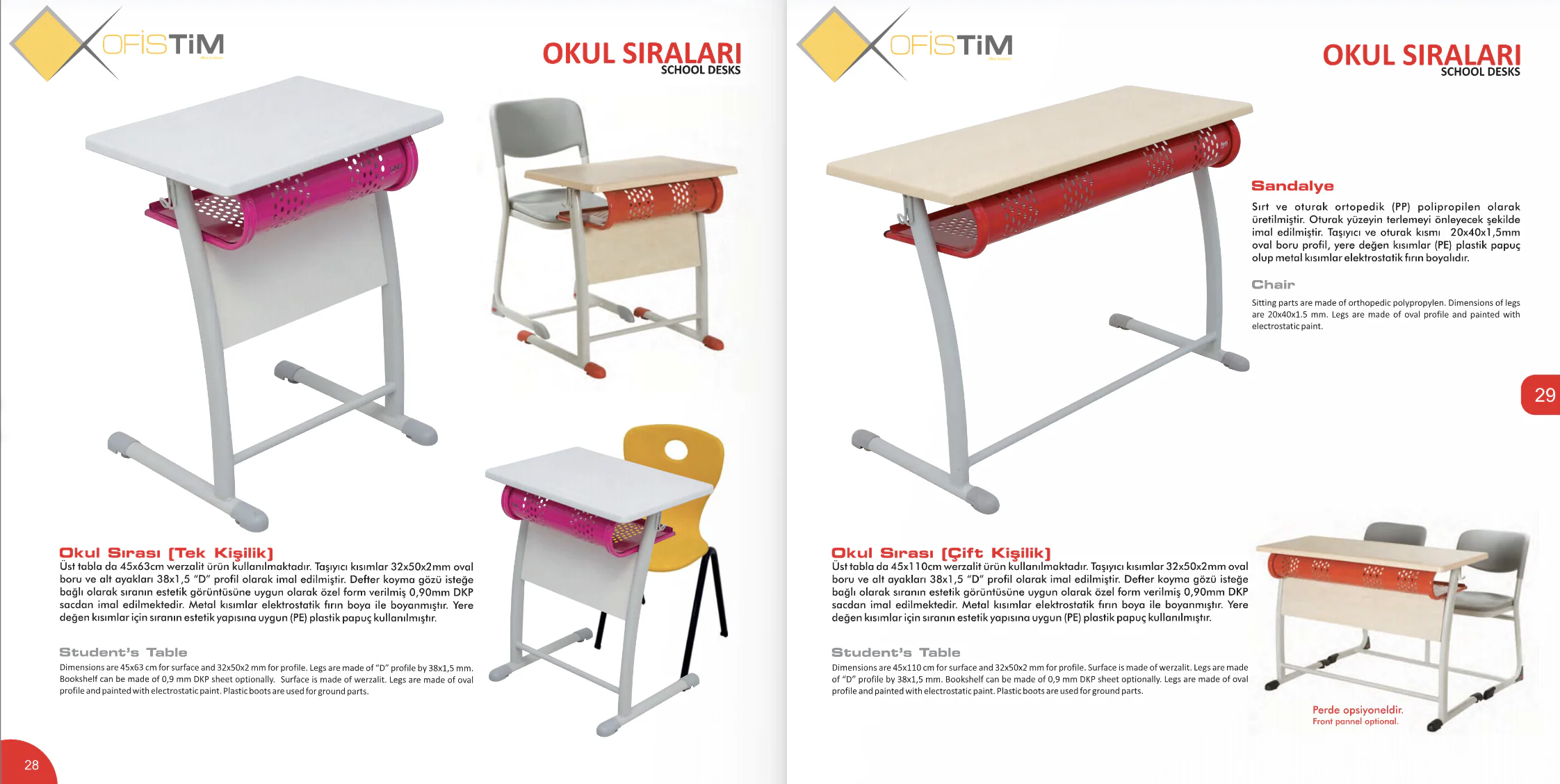School Furniture Suppliers; School furniture is an important consideration for any educational institution, impacting the health, learning, and focus of students. With the average child spending over 6 hours per day sitting in school, the furniture they use has a direct influence on their posture, comfort, and ability to concentrate.
The school furniture industry has evolved in recent decades to address the specialized needs of students and teachers in classroom and computer lab settings. Suppliers now offer a wide selection of desks, chairs, tables, storage units, and other educational furnishings designed for safety, ergonomics and learning in the 21st century classroom. Many options also allow flexibility, mobility, and technology integration.
With so many products to choose from, educational institutions must balance numerous factors including cost, durability, maintenance, and flexibility when selecting school furniture. This article provides an overview of key considerations when choosing suppliers and outfitting learning spaces with modern school furniture.
Importance of School Furniture
The furniture and physical environment of a classroom play a crucial role in students’ learning, health, and engagement. Selecting high-quality school furniture should be a top priority, as it impacts students day after day.
The layout, comfort, and versatility of classroom furniture influence how students interact with content, teachers, and peers. Well-designed desks, chairs, and collaborative areas foster participation, focus, and a positive learning atmosphere. In contrast, outdated, impractical, or uncomfortable furniture can hinder concentration during lessons.
Ergonomic school furniture promotes proper posture and reduces strain for students of all ages. Chairs with adjustable heights and desk sizes tailored to grade levels help avoid health issues like back and neck pain. Standing desks are an increasingly popular option to combat the negative effects of prolonged sitting.
Movable, flexible furniture makes classrooms more dynamic and engaging. Lightweight chairs with wheels and tables that can be rearranged into groups allow for project-based learning, discussions, and hands-on activities. This flexibility enables diverse teaching methods beyond traditional lectures.
Ergonomics
One of the most important factors when choosing school furniture is ergonomics. Students spend many hours each day sitting at desks and chairs, so it’s crucial that the furniture properly fits each child. Ill-fitting furniture can lead to poor posture, discomfort, and even injuries or chronic problems over time.
When selecting desks, chairs, and other furniture, schools must consider the anthropometric measurements of their specific student population. Desks and seats should be made in multiple sizes to accommodate the height and proportions of different children. Many leading manufacturers now offer seating with adjustable seat pans, backrests, and armrests. This allows each item to be customized for individual body shapes and sizes.
Chairs with adjustable seat height and tilt are especially beneficial, as they enable proper thigh support and torso angles. This helps maintain the natural S-shaped curve of the spine while sitting upright. Footrests for shorter students can also promote proper leg positioning.
Adjustable furniture enables continuous ergonomic support as children grow. It also allows multiple students to use the same desk or chair by modifying it to fit their needs. Compared to fixed, one-size-fits-all items, adjustable school furniture promotes better health, comfort, and learning focus for students.
Durability
When selecting school furniture, durability should be a top priority. After all, school furniture gets used heavily day after day by students and teachers. Choosing durable furniture that can withstand frequent use is crucial for getting the most value for your money.
There are several factors that affect the durability of school furniture:
-
Materials – Sturdy materials like wood, metal, and heavy-duty plastics last longer than lower quality materials prone to easy scratching, breaking, or wear and tear. Opt for solid wood over particle board, and metal or steel legs and frames over plastic. Upholstered furniture should have fabrics tested for durability and coated to resist stains.
-
Quality – Well-constructed furniture made with care using quality materials and processes will have superior durability compared to budget or mass-produced options. Examine things like sturdy joints, reinforced stress points, and smooth surfaces. Higher quality furniture simply lasts longer through years of use.
-
Warranty – Reputable school furniture suppliers will stand behind their products with generous warranties of 10 years or more. Longer warranties give you peace of mind that the furniture will hold up or be replaced if issues arise. Be sure to check warranty coverage details before purchasing.
Investing in high-quality, durable school furniture means you won’t have to replace pieces nearly as often. This saves you money over time while ensuring students can use safe, sturdy furniture that withstands daily wear and tear. Partner with a reliable furniture supplier that prioritizes durability in their school furniture collections.
Flexibility
When buying school furniture, flexibility is key. Classrooms today need adaptable, movable furniture that can be reconfigured to support different learning activities. Furniture on casters that easily rolls and rearranges allows teachers to create small group collaboration spaces, presentation areas, and traditional rows of desks with ease. Lightweight stackable chairs that can be moved between rooms are also useful.
Flexible furniture accommodates the evolving needs of students and educators. Mobile desks and chairs make it easy to transition a room from lecture-style to group work mode. Kids can quickly form pairs or small groups to interact. Learning areas and layouts can be reimagined in minutes without hassle.
Movable furniture also enables social distancing and spacing modifications if required. Desks and chairs on casters roll apart for spacing between students then back together when able. Rooms can fluidly adjust as health guidelines change.
Ultimately, flexible school furniture optimizes learning spaces for collaboration, creativity, and changing needs. Adaptable designs create classrooms that support diverse activities and growth over time.
Integrating Technology into the Classroom through School Furniture
Technology has become an integral part of education, with devices like laptops, tablets, and phones allowing students to access information and collaborate in new ways. However, incorporating technology successfully requires the right infrastructure and furniture.
School furniture suppliers are responding to this need by designing furniture that enables seamless technology integration in the classroom. This includes built-in power outlets, USB charging ports, and wire management systems to organize cords and cables.
Built-in power outlets and USB charging ports allow students to conveniently charge their devices without tangling wires. The ports can be installed in table tops or along the modesty panels of seated desks. This enables every student equal access to charge points. Some school furniture even comes equipped with AC and DC sockets to charge a wide range of devices.
Wire management is also essential for keeping charging cables organized and out of the way. Furniture designed for technology use often includes vertical and horizontal wire chases to direct and conceal wires between furniture units. Desks may have hinged lids to hide cables or trays underneath to bundle wires. For a wireless classroom, cable cubbies and slots can be included to store and secure cables when not charging.









